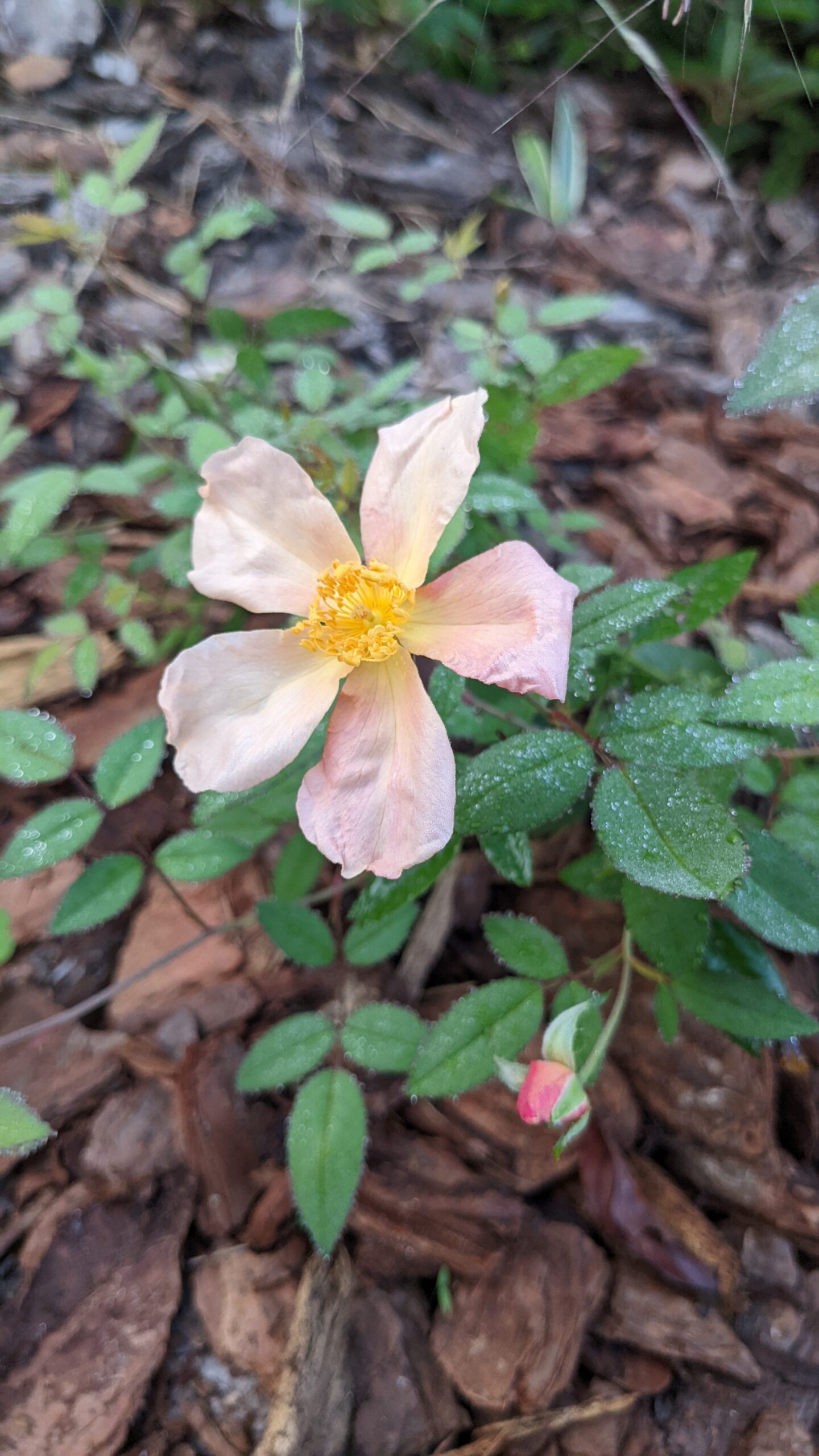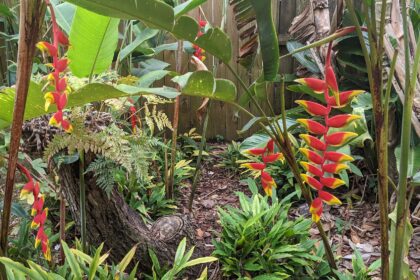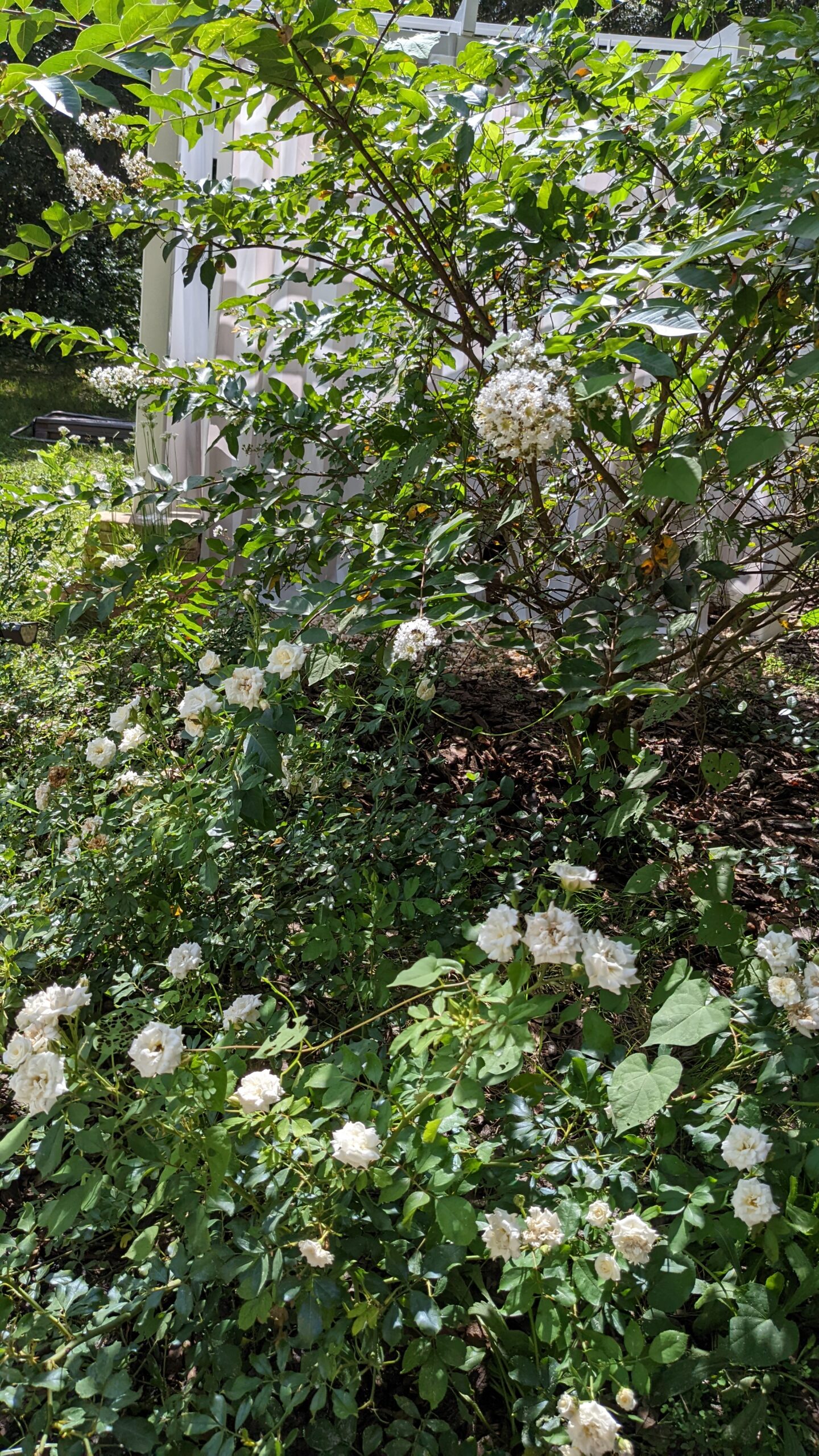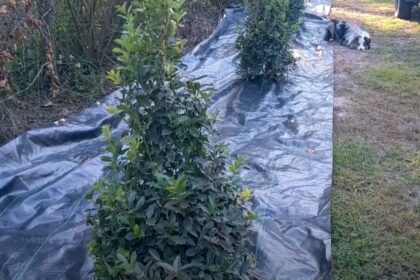I love collecting plants. So much so, that my gardens can sometimes look like a patchwork of varying different plants with no real sense of harmony, structure, or repetition. For the most part, my desire to experiment with different plants outweighs all other needs… at least it did initially. At some point, however, I decided that I need to provide more evergreens and more plants in huge swaths that repeat throughout the garden canvas.
Looking at some of my garden spaces, I do have drifts of crinum lilies, golden dewdrop, daylilies, loropetalum, sunshine ligustrum, crepe myrtles, podocarpus trees, drift roses, beds of schefflera, and edges of lilyturf. At some point, I added balls of yaupon holly for evergreen interest. I also lined the white vinyl fence with little upright soldiers of blue spruce juniper, oakland holly, and torulosa (hollywood) junipers. I even have areas with multiple azaleas of the same variety (most notably formosa and George Tabor) that add a spectacular splash of uniform color.
All of these were so important to providing the structure, harmony and repetition I felt took my gardens to the next level.
I would add to that planting in larger beds. Any pencil thin borders I had were ultimately enlarged (save one which is next on my hit list lol). Gone are the days of digging a hole in the middle of the grass just to plant one plant. It is best to dig out an entire kidney shape or enlarged geometric shape, be it rectangular or circular, or some freeform, while enriching the soil, edging the bed crisply, and filling it with mulch. And no matter how large I make the beds, I always seem to go back and expand them even more!
Expanding on the idea, I planted two skyrocket junipers in my Mrs. B.R. Cant beds around which I planted edges of Japanese boxwood en masse. I also added two Brodie Junipers in front of the studio porch, nine spartan junipers to hide the chicken coop, ten Italian Cypress along the drive to provide the aura of a path to a home in Province. I also planted three Washingtonia palm trees behind five Elaeagnus and shaped them into large 6-foot sized silver balls. Because that sun bed is so full of round shrubs, I added five Taylor junipers to provide a blue vertical element as they will reach 15-20 feet tall but only 3-feet wide.
After planting two sylvester palms, I underplanted them with three plumbagos each to create a larger groundcover mass or lovely lavender flowers.
My latest kick is masses of hydrangeas. I planted three new beds this spring. The first one is a bed of three limelights that receive morning sun and afternoon shade to the east of a slightly wooded area. These will quickly grow ginormous to six- or eight-feet round with huge green to white to pink panicles as a backdrop for a bed at the intersection of my driveway.
Another hydrangea bed I planted is actually two semi-circular beds at the edge of the woods, also east facing with morning sun and afternoon shade. I planted a drift of five “The Original” endless summer, the typical purple/pink balled versions your grandma had) on one side and seven on the other. These will grow three to five feet tall and rebloom on both old and new wood. Behind these I planted two and three limelight primes which are larger and more upright with the same flower colors as the original limelight.
Another edge of drift roses was planted to the east of the studio porch. In front of that I planted pink cashmere superbena. I also lined the west edge of the rose parterre with these glorious and happy pink flowers that form a beautiful carpet. Behind those, blue salvias are planted in a row. I also edged the front of the sun garden with superbena whiteout to stand out in front of the drift rose beds.
The final drift planting I did just last week is I planted six Summerific Edge of Night rose mallow. I hope they take off to form a stunning row of dark purple leafed hedges with bright pink hibiscus blooms by summer’s end.
All-in-all, this mass drift planting is quite satisfying method for bringing huge impact to the garden. My saying lately is “Go big or go home!” and planting in groupings of five to seven or more really knocks it out of the park.
Happy gardening!



